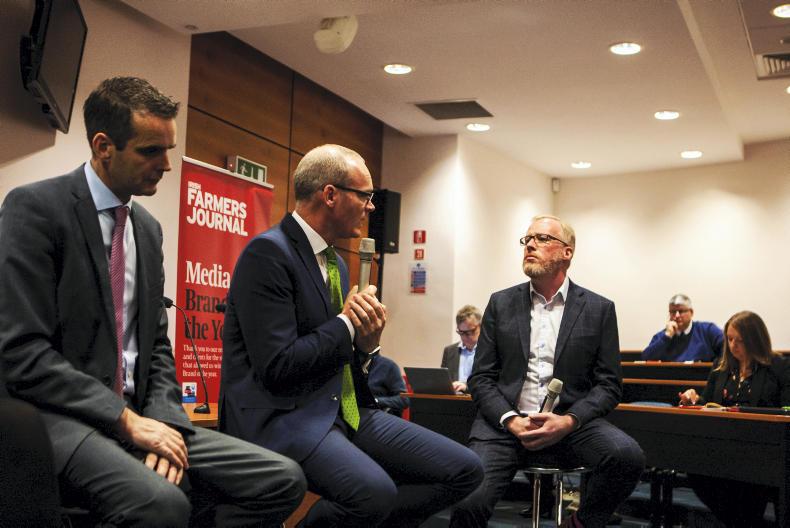Climate policy and the next CAP must favour food production where it is most efficient, An Tánaiste Simon Coveney told members of the International Federation of Agricultural Journalists visiting Ireland on Friday.
“If we wanted to see climate change in the context of what Ireland or Europe deals with on its own, we can create expensive alternatives to dairy and meat to make up that protein loss in terms of people’s diets, and we can probably afford to do it,” he said.
However, with population rising and nutrition improving in Africa and Asia, we should instead show the rest of the world “how to produce milk at less than half the emissions intensity of the global average, which is what Irish milk is produced at”, An Tánaiste said. “Surely that is the way in which Irish and EU agriculture contributes positively to reducing the emissions intensity of food production when we know that food production has to massively increase over the next two to three decades.”
Climate efficient
He warned that this does not exempt Irish agriculture from becoming more climate efficient. “That is where the CAP comes in, because we need to continue to be pushed and tested and monitored and surveyed in terms of how we’re producing,” Tánaiste Coveney said. “Then we actually encourage countries that are most efficient in terms of food production, that have the climate, natural competitive advantage in terms of food production to actually do more, not do less.”
Read more
Soil fertility holds key to climate challenge
Climate policy and the next CAP must favour food production where it is most efficient, An Tánaiste Simon Coveney told members of the International Federation of Agricultural Journalists visiting Ireland on Friday.
“If we wanted to see climate change in the context of what Ireland or Europe deals with on its own, we can create expensive alternatives to dairy and meat to make up that protein loss in terms of people’s diets, and we can probably afford to do it,” he said.
However, with population rising and nutrition improving in Africa and Asia, we should instead show the rest of the world “how to produce milk at less than half the emissions intensity of the global average, which is what Irish milk is produced at”, An Tánaiste said. “Surely that is the way in which Irish and EU agriculture contributes positively to reducing the emissions intensity of food production when we know that food production has to massively increase over the next two to three decades.”
Climate efficient
He warned that this does not exempt Irish agriculture from becoming more climate efficient. “That is where the CAP comes in, because we need to continue to be pushed and tested and monitored and surveyed in terms of how we’re producing,” Tánaiste Coveney said. “Then we actually encourage countries that are most efficient in terms of food production, that have the climate, natural competitive advantage in terms of food production to actually do more, not do less.”
Read more
Soil fertility holds key to climate challenge






 This is a subscriber-only article
This is a subscriber-only article










SHARING OPTIONS: